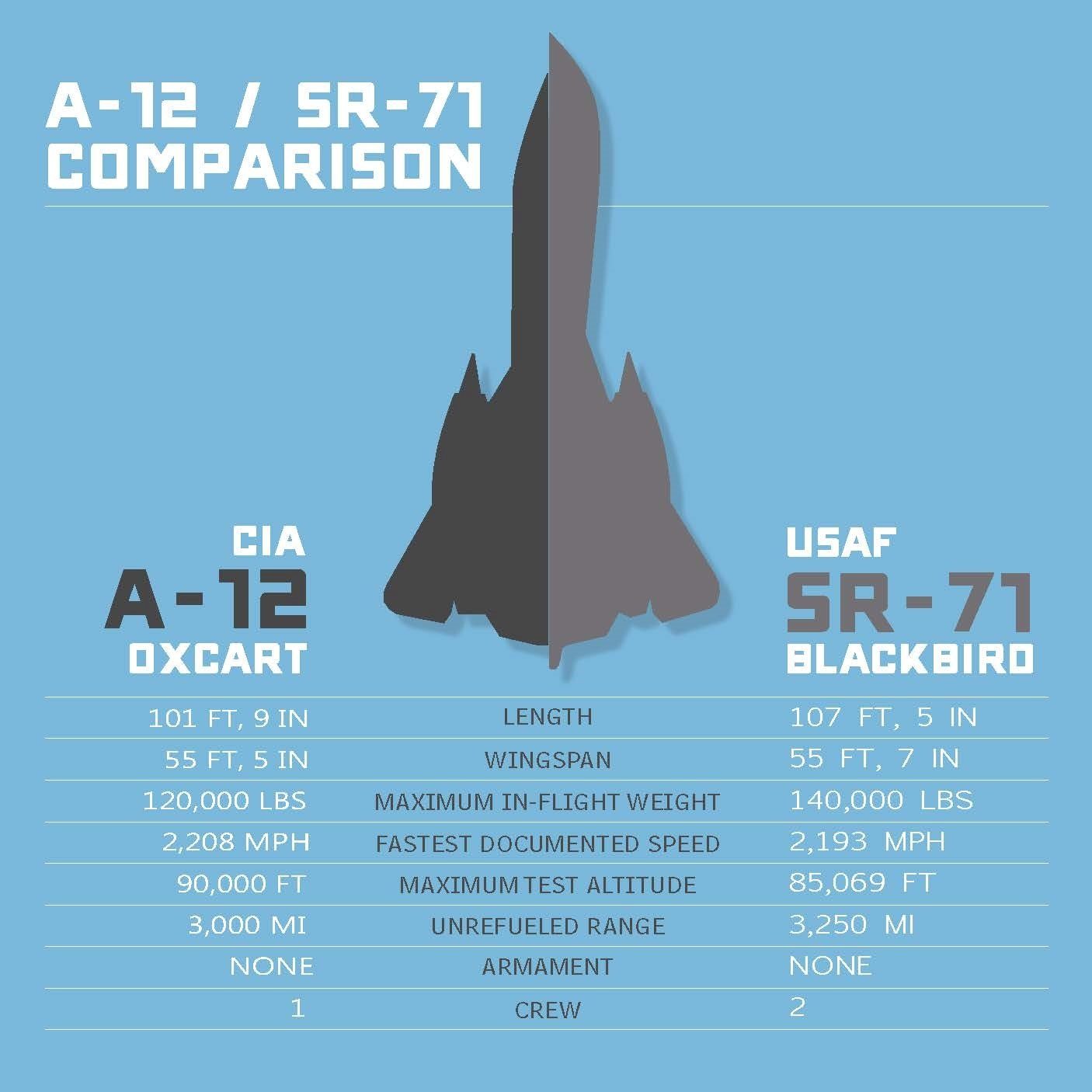Code-named “Nice Girl,” the recon fly-off between the A-12 and the SR-71 took place between October 20 and November 3, 1967
Unofficially referred to as the “Blackbird,” the SR-71 is a sophisticated, long-range strategic reconnaissance aircraft. Dec. 22, 1964, saw the first SR-71 flight, and in January 1966, the 4200th (later 9th) Strategic Reconnaissance Wing at Beale Air Force Base (AFB), California, received the aircraft. On January 26, 1990, the US Air Force (USAF) retired its fleet of SR-71 aircraft due to rising operating expenses and a dwindling defense budget.
For almost 24 years, the SR-71 held the record for being the fastest and highest-flying operational aircraft in the world. It could cover 100,000 square miles of the Earth’s surface per hour from 80,000 feet. The SR-71 was derived from the A-12 Oxcart, another Mach 3 high-altitude reconnaissance aircraft.
The CIA operated the A-12, but its operational lifetime was short-lived because the CORONA reconnaissance satellite, which was first launched in June 1959, began providing worldwide imagery without much of the risk associated with airborne reconnaissance. The A-12 was retired in 1968 as a result of the SR-71 joining the US Air Force (USAF) at the same time. Why did the A-12 Oxcart lose out to the SR-71 Blackbird?

Code-named “Nice Girl,” the recon fly-off between the A-12 and the SR-71 took place over the United States from October 20 to November 3, 1967. It involved refueling and flying identical routes one hour apart on three different days, and both aircraft completed the entire sortie with collection sensors operational.
The SR-71 performed well on the first attempt, but the A-12 had an issue. The situation was the opposite on the second day. Both aircraft completed the trip successfully on day three. That day, there was an undercast over the northern region (from California to Kentucky); therefore, the SR-71 was able to collect ELINT and SLR data while the A-12 could only take pictures of the clouds. Both increased speed and altitude over the Gulf of Mexico after receiving air refueling. The weather was CAVU from New Orleans to the San Francisco area, and both aircraft were able to provide all of the data they needed for the evaluation.
The aircrews that took part in the program were:
- Lt. Col. Al Hichew and I, Maj. Tom Schmittou, flew mission #1.
- Maj. John Storrie and Maj. Coz Mallozzi flew mission #2 Maj.
- Bill Campbell and Capt. Al Pennington flew mission #3.
- Jack Weeks flew all three A-12 missions.
The first two flight days were inconclusive. Intelligence evaluators concluded that the SR-71 was a better overall investment after the third day of flying. While the A-12s’ cameras were superior due to their wider swath and higher resolution, the SR-71 was able to gather a greater variety of intelligence than the CIA aircraft. These additional sensors included side-looking airborne radar, infrared detectors, and ELINT-collection devices required for the SR-71 post-nuclear strike reconnaissance mission.
The conclusion was that they picked the SR-71 to continue flying. The A-12s were retired. The A-12s were put in hangars until 1984.
Check out the Born into the Wilde Blue Yonder Facebook page for further Blackbird photos and stories.
Photo by Lockheed Martin and U.S. Air Force

